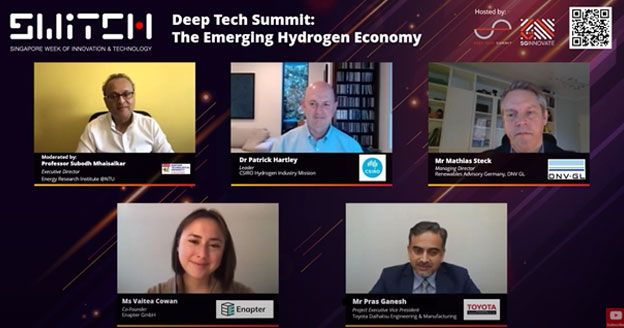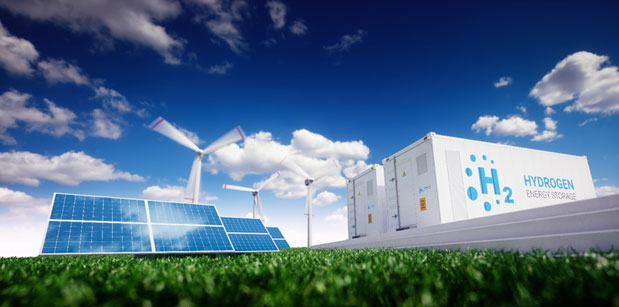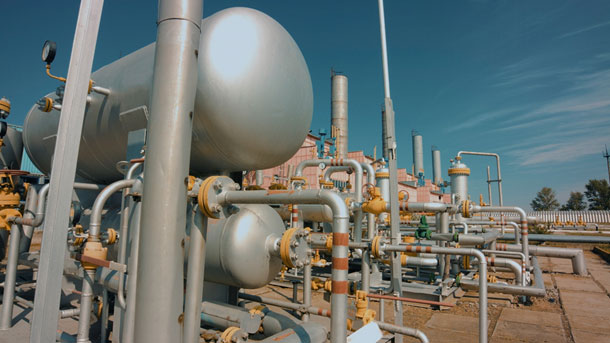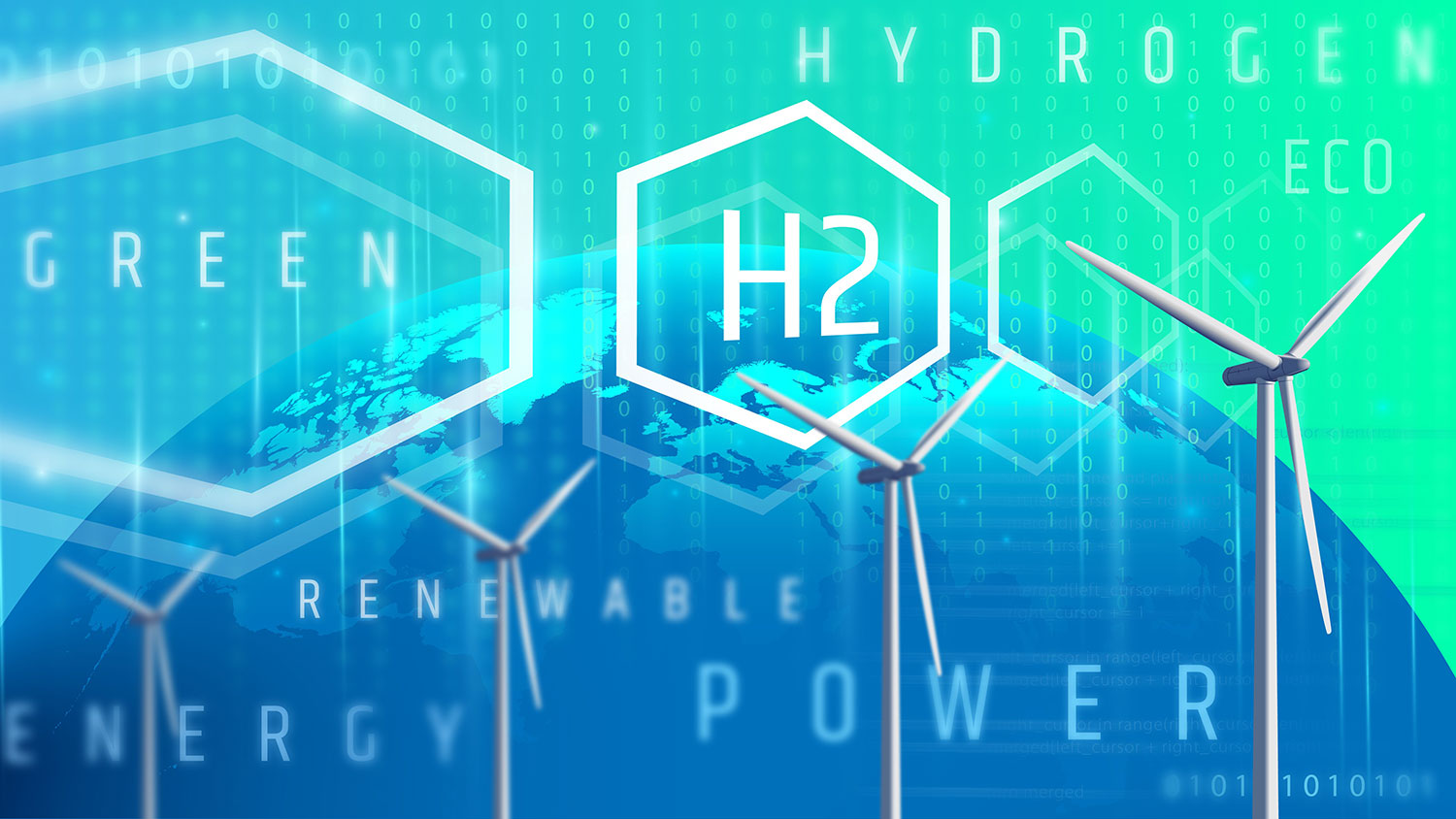Realising a Hydrogen Economy
Wed, 12/23/2020 - 12:00
Hydrogen can be made with more renewable resources, but only in recent years has it become ready for scale and commercialisation. As the hydrogen industry grows, it could contribute to billions in revenue and millions of new jobs.
The International Energy Agency reports that since 1975, the demand for hydrogen has tripled and is still rising. Much of this is supplied by fossil fuels — 6% of global natural gas and 2% of global coal is used for hydrogen production.
That makes the production of hydrogen responsible for about 830 million tonnes of carbon dioxide emissions per year. Hydrogen can be made with more renewable resources, but only in recent years has it become ready for scale and commercialisation. As the hydrogen industry grows, it could contribute to billions in revenue and millions of new jobs.
Even so, there remain key technological challenges and barriers to the road ahead for the mass adoption of hydrogen as a sustainable energy source. Let’s explore some of the key challenges and solutions towards realising a hydrogen economy with leading experts involved in various areas of the hydrogen production cycle, and who spoke on a featured panel at the Deep Tech Summit, hosted by SGInnovate.

The Pursuit of Hydrogen — And Why
Hydrogen has been touted as the next big thing in addressing global energy needs. Indeed, it has shown great potential in many industrial processes, from producing rocket fuel to refining petroleum to hydrogenating fats and oils for food. It can also be used as a cleaner energy source for transportation and utilities, manufacturing and services.
There are four ways to produce hydrogen today. They are commonly known as grey, brown, blue, and green to denote their varying degrees of environmental friendliness. With the growing emphasis on climate change and building a more sustainable future, it is of no surprise that producers increasingly look to decarbonising hydrogen production to reduce pollution and shorten the production process.
Starting us off are the grey and brown hydrogen, which are derived from fossil fuel, offered Patrick Hartley, Director of the Commonwealth Scientific and Industrial Research Organisation’s Hydrogen Industry Mission. However, both of them are a zero-sum game at decarbonisation, as brown hydrogen is created through coal gasification while grey hydrogen produced from natural gas emits carbon waste.
The blue hydrogen, compared to grey and brown hydrogen, offers more sustainable production. “Currently, 75 million tonnes of hydrogen are produced using these polluting technologies every year. Blue hydrogen uses the same processes as grey and brown, but here, we decarbonise the fossil-fuel-derived hydrogen using carbon capture and storage (CCS) and maybe even carbon utilisation,” said Hartley.
Finally, the green hydrogen, being the most sustainable of the lot, involves the use of very different technology entirely — electrolysis. Electricity and electrochemical cells split water into its constituent atoms or molecules — hydrogen and oxygen, which can then be collected and stored. No carbon is emitted during electrolysis, hence making it the ‘greenest’ choice.
The time is now ripe for the commercialisation and scaling of hydrogen. Noting this, Pras Ganesh, a founding member of the Hydrogen Council, a global initiative led by 92 companies representing energy, transport and other sectors, explained, “While it is because of the technology and scale, and enthusiasm from various stakeholders, the most important reason is the need for utilising hydrogen for decarbonisation.”
Likening the attractiveness of hydrogen to a ‘swiss army knife’ of energy, Ganesh pointed out, “There are seven use cases for hydrogen: Enabling large-scale efficient renewal energy integration, distributing energy across sectors, serving as a buffer to increase system resilience during winter or rainy seasons, decarbonising transport used as a feedstock for industry or for carbon capture, and decarbonising heating for residential or industrial places.”
Within the use cases, there are also three key drivers accelerating the rise of hydrogen, added Ganesh. One of them is energy security where hydrogen can capture and store renewable energy which in turns provides energy security to us. Today, globally, we have 55 days of energy security and most of them are based on fossil fuel; hydrogen is capable of transferring that into renewable energy. Secondly, hydrogen contributes economic value as a tradeable energy, not just with fossil fuel. Finally, hydrogen supports the environmental imperative with its ability to abate the more difficult CO2 areas such as for heavy-duty transportation, shipping, airlines and steel.
Moreover, according to a study conducted by the Hydrogen Council on the amount of energy that can be produced by hydrogen and the readiness of sectors to transfer to hydrogen in 2050, certain sectors would be ready by then to make the transition and could do up to 80% crossover to hydrogen, which bodes well for the true arrival of a hydrogen economy.

The Myriad Challenges of Achieving a Hydrogen Economy
However, to effectively harness hydrogen as a fuel of the future, we will need to consider various barriers to its utilisation and adoption as well.
1. Storing and sending hydrogen is difficult
First of all, it is a challenge to store and transport hydrogen. Hydrogen has to be densified and maintained at a high-pressure level of 70 megapascals to be transportable. Some producers choose to liquify it instead. However, that involves cooling hydrogen down to minus 253 degrees Celsius — a difficult temperature to maintain across varying geographic conditions.
The third way to transport hydrogen is to store or move it in the form of a chemical carrier. To this end, Ammonia is a particularly popular choice among researchers because it is a high-density hydrogen carrier that can be transported and stored relatively easily. However, it is costly to produce these carriers.
Another potential solution that is possibly much simpler and affordable to use is the gas distribution networks that are available in many countries. Explained Hartley, “From a cost perspective, we probably cannot build a completely new hydrogen infrastructure, so we will have to use existing systems.”

2. Safety also poses a challenge
Secondly, hydrogen can easily ignite. It has a large explosive capacity, which means that we could run into infrastructure and safety problems. At the same time, it is important to determine how to best handle hydrogen in houses and in residential environments. This would involve thoroughly identifying the risks and solutions to mitigate the perils of hydrogen utilisation.
3. Businesses require incentives to adopt hydrogen
Beyond fundamental storage and safety concerns, hydrogen adoption requires profitable use cases and business incentives to take off, the most important ingredients in achieving the vision many have for hydrogen, offered Mathias Steck, Managing Director of Det Norske Veritas/Germaischer Lloyd (DNV GL). “In the past, wind and solar energy were considered to be tree-hugger industries in the beginning. Today? The big investment firms and governments are most active in this respected industry. This needs to happen to hydrogen,” he explained.
Echoing the same sentiment, Hartley added, ‘Unfortunately, but understandably, as long as it is cheaper to just emit carbon, that's what people will do. Blue hydrogen, which is decarbonised, is needed to transition to green hydrogen as we build the required volumes to achieve more interesting economic models. This comes hand in hand with the right policies on a societal and corporate level.”
“Even if people understand that this could save the world, ultimately businesses will rely on these financial factors to determine whether a switch is viable,” Steck added.
Unlocking Hydrogen Electrolysis at Scale by Building Integrated Ecosystems
“On a technological level, one of the main challenges in achieving green hydrogen has been the cost of electrolysis,” said Vaitea Cowan, co-founder of Enapter, an industry-transforming company which is designing and manufacturing a compact AEM Electrolyser that affordably produces green hydrogen. “Traditional technologies — PEM and alkaline systems — are efficient and have a good lifespan because they rely on platinum/gold metal groups. But that makes them costly. At Enapter, we are using a completely unique AEM technology. It combines the benefits of PEM and alkaline systems by allowing the use of non-noble catalysts,” she added.
Boasting the size of a microwave, Enapter’s electrolyser sits at the very beginning of the hydrogen supply chain to provide alternative fuel for the mobility sector and other industries that are difficult to decarbonise. Drawing an analogy between the IT industry in the 1980s and the electrolyser industry today, Cowan explained that each of Enapter’s solutions is designed as a unique project which requires sophisticated engineering and planning. Their manufacturing and production systems are heavily inspired by the IT industry's early mainframes.
“Nothing has seen more rapid cost reduction in economic history than mass-produced commodities. Tech companies were able to achieve great innovation in the PC, a product that is standardised, modular, and scalable, in just a few years. We hope to do the same,” Cowan shared.
“Still, our electrolyser is only one piece of the puzzle. It operates within an entire energy setup, so ease of integration was critical for us. The solar panel, inverter, battery, fuel cell, and storage tank are most likely made by different manufacturers, so we need to make sure that all of these devices can communicate with each other, and set and follow rules,” enthused Cowan who hopes to create an energy management system capable of remote monitoring and control with Enapter as a gateway to translate all of the different protocols and languages used by the devices in the ecosystem.
Entrepreneurship and Collaboration Could Help Drive Sustainable Hydrogen
Just like Enapter’s electrolyser needs to “play nicely” with other devices and parts, startups need to collaborate to build a cohesive ecosystem. “We are missing these bridges and connections between companies and countries. I feel like new startups could really create these bridges, either by building a product or through services such as system integration,” Cowan highlighted.
She pointed to the power of startups in unlocking new business models, such as rentals of electrolysis devices, and added, “A tip I want to share to all entrepreneurs is that building your network is super important. As a technology provider, we have made sure to also develop a partner network to provide the customer service, maintenance, and integration, culminating in turnkey hydrogen solutions.”
Besides creating an environment that allows them to test their new ideas, Steck added that convening different players in the ecosystem to work together on solutions will be critical in bringing success to a hydrogen economy. “I have learnt a lot from my colleagues [at the Deep Tech Summit] and truly enjoyed discussing these matters. I think as long as we are all sitting together like we did today, on this panel, talking about how we can overcome technical and regulatory barriers, there is a great future for hydrogen to play an important role in the energy transition,” he concluded.
For more exciting highlights from our Deep Tech Summit, visit deeptechsummit.com.
Trending Posts
- From satellites to startups, Singapore’s space sector is pushing new frontiers
- How leaders should rethink cybersecurity strategy
- How to Future-Proof a Career in Deep Tech? Start here.
- The future of fusion energy: What will it take to bring the power of the stars to earth?
- Keeping satellites safe: How CYSAT Asia 2026 is tackling space cybersecurity






